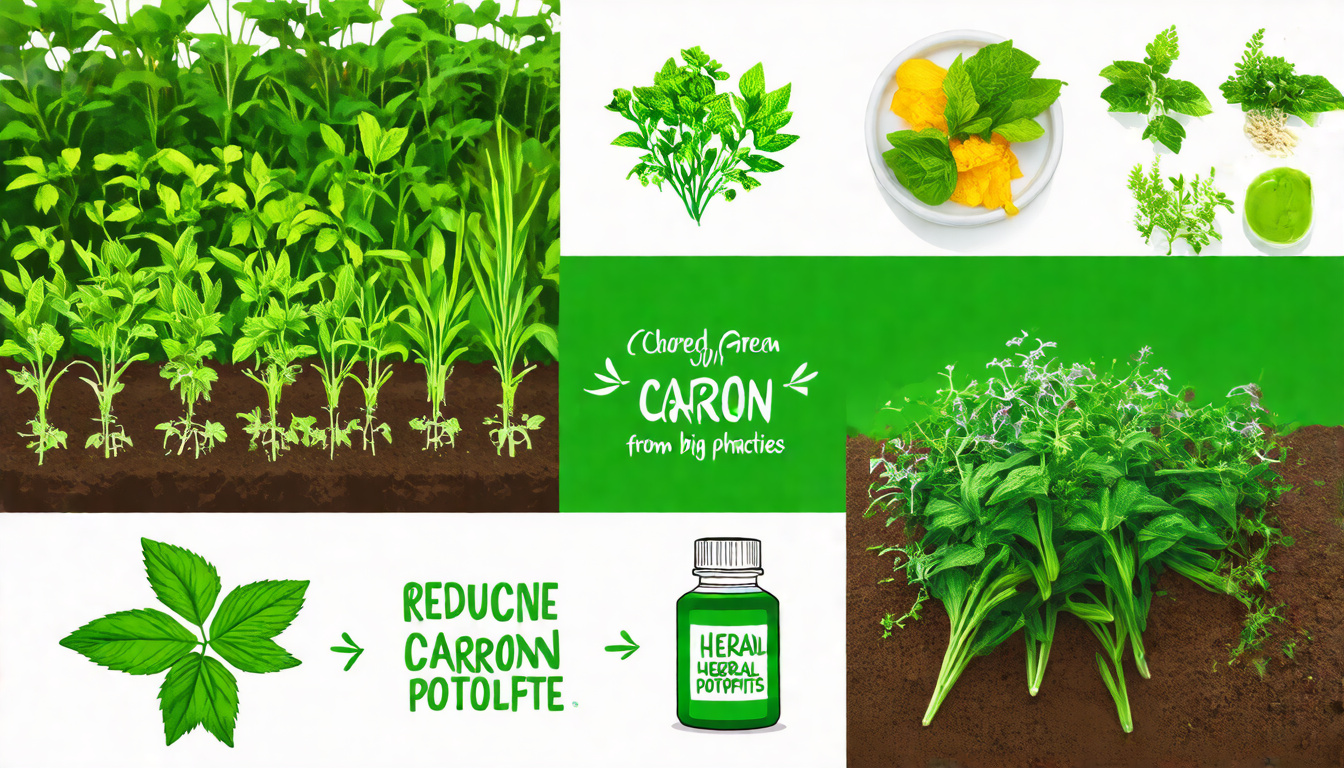
Embrace Herbal Living: A Sustainable Path to Reducing Your Carbon Footprint
Share
Today we face many challenges in caring for our earth. Lowering your carbon footprint helps protect our home. Herbal living is a natural and steady way to cut your impact. Grow herbs in your garden. Use farming that cares for the land. Herbal living binds you to nature and guides you toward green choices. This text shows how herbal living and careful actions can cut carbon releases.
What Does Reducing Your Carbon Footprint Mean?
Your carbon footprint is the total gas you send into the air. It comes from how you use power, travel, eat, and handle waste. Each daily act builds this footprint. Cutting it means choosing ways that lower gas, save resources, and keep nature safe.
Why Focus on Herbal Living?
Herbs are small plants that help in food, healing, and care. They add taste and give health benefits as you live wisely. Herbs show their strength in these ways: • Herbs can be grown with less strain on nature than many other crops. • Herbs grown with care help the soil and add life to small creatures. • They often need less water and man-made chemicals than big farms. • Using herbs in daily life builds a close link with nature and shifts habits toward care.
Sustainable Farming: The Foundation of Herbal Living
Herbal living cuts carbon release when you farm in a kind way. This work repairs the land and locks away carbon while letting wild forms thrive. Ways to farm herbs with care include:
• Organic farming: Skip man-made sprays and poisons to cut waste and keep soil rich.
• Regenerative methods: Mix plant types, change fields, turn the soil less, and feed compost to build life in the land.
• Food forests: Grow herbs with trees and shrubs in layers as one busy garden.
• Water-smart ways: Use drip setups, collect rain, and plan water use to cut waste.
 Herb Processing: Choose Eco-Friendly Methods
Herb Processing: Choose Eco-Friendly Methods
When you turn herbs into spices or extracts, the work can harm the air if done wrong. Drying herbs on an open fire may add pollution and lower quality. Kind methods to process herbs include: • Sun drying: Let the sun warm and dry herbs. This cuts fuel use. • Energy-saving dryers: Machines that use less power help to cut emissions. • Better packing: Pick materials that break down or can be recycled while using less for each package. These steps cut pollution, safeguard quality, and meet the call for greener products.
Grow Your Own Herbs: A Simple Step Toward Sustainability
Growing herbs at home is easy and brings many gains. You can find a spot on a windowsill, balcony, or in a shared garden. Gains include: • Less carbon from long trips that bring store herbs. • Less food waste when you pick right when needed. • More life in your space as bees and birds visit. • A healthy, green hobby that ties you to nature. Try basil, mint, oregano, or rosemary. Use good soil and compost, skip harsh chemicals, and water with care.
Incorporate Herbal Products in Your Lifestyle
Buying products made from herbs helps spread kind practices: • Pick organic herbal teas, spices, or care creams. • Choose brands that use green power and simple packing. • Use herb-based help as an alternative to man-made drugs when the need is right. These choices build supply chains that care for the earth and push companies to try kind ideas.
Additional Sustainable Living Practices to Complement Herbal Living
Cutting your carbon footprint goes past herbs. Mix these habits to multiply your care: • Eat more plant foods with herbs, fruits, nuts, and grains. This cuts gases from animal food production. • Use home tools and power that save energy. • Choose to walk, bike, ride with friends, or drive electric cars. • Follow three simple rules: cut waste, reuse things, and recycle what you can. • Support local growers to trim long trips and lower chemical use. When you blend herbal living with these habits, you form a full plan to lower your carbon release.
Conclusion: Small Changes, Big Impact
Herbal living is a natural path to cut the gas you add to our air. Growing herbs with care, processing them right, and choosing wisely help save resources and life forms. Whether by nurturing herbs at home or picking green herbal products, each step draws you nearer to nature and builds a safe earth.
Start now—embrace herbal living and step on a green path to cutting your carbon footprint.
